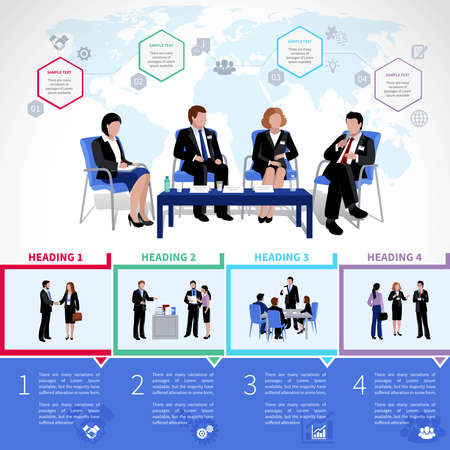Understanding Records of Processing Activities (ROPA) in the UK Context
The concept of Records of Processing Activities (ROPA) is central to the effective implementation of data protection compliance under the UK General Data Protection Regulation (UK GDPR). At its core, ROPA refers to a comprehensive log or documentation of all personal data processing activities carried out by an organisation. This requirement is not merely a bureaucratic formality but a crucial element for demonstrating accountability and transparency in handling personal data within the United Kingdom.
Under Article 30 of the UK GDPR, organisations—particularly those with more than 250 employees, or those whose processing is likely to result in a risk to the rights and freedoms of individuals—are obliged to maintain detailed records of their processing activities. These records must include information such as the purposes of processing, categories of data subjects and personal data, recipients of personal data, transfers to third countries, and the envisaged time limits for erasure. In addition, both controllers and processors have distinct but complementary responsibilities when it comes to maintaining these records.
For UK organisations, maintaining an up-to-date ROPA goes beyond simply ticking a compliance box. It provides a structured approach to understanding and managing data flows, ensuring that any processing of personal information aligns with legal requirements and best practices. Failure to maintain adequate records can expose organisations to regulatory scrutiny by the Information Commissioner’s Office (ICO) and potentially lead to significant penalties. As such, ROPA serves not only as a compliance tool but also as a practical resource for identifying risks, streamlining processes, and fostering trust among customers and stakeholders in an increasingly data-driven economy.
2. Key Legal Requirements and Best Practices
The UK General Data Protection Regulation (UK GDPR) sets out specific obligations regarding Records of Processing Activities (RoPA). Organisations, especially those with over 250 employees or those whose processing is likely to result in a risk to individuals’ rights and freedoms, are legally required to maintain comprehensive documentation of their data processing activities. The Information Commissioner’s Office (ICO) provides clear guidance on what should be included and how these records should be maintained to ensure compliance.
Summary of UK GDPR Provisions
The core legal requirements for RoPA under the UK GDPR are outlined in Article 30. These stipulate that both controllers and processors must document essential information about their processing activities. This obligation extends beyond large organisations—any entity engaged in high-risk or regular data processing is expected to comply. The ICO further emphasises the importance of keeping these records accurate, up-to-date, and readily available for inspection.
Key Elements Required in Records
| Requirement | Description |
|---|---|
| Name and details of the organisation (controller/processor) | Identify all relevant parties responsible for data handling. |
| Purposes of processing | Clearly state why personal data is being processed. |
| Categories of individuals and personal data | Describe whose data is processed and what types are involved. |
| Recipients of personal data | List third parties or internal departments receiving the data. |
| Transfers to third countries | Specify if data is sent outside the UK, including safeguards used. |
| Retention schedules | Indicate how long each type of data is kept before deletion. |
| Security measures | Document technical and organisational measures protecting the data. |
ICO Guidance and Practical Steps
The ICO recommends adopting a practical approach by mapping out all processing activities within the organisation. Regular reviews—at least annually—are advised to ensure records remain current. The ICO also encourages integrating RoPA with wider data governance practices, such as privacy notices, risk assessments, and incident response plans.
Best Practice Recommendations
- Create a centralised template: Standardise documentation across departments using a shared format.
- Appoint responsible personnel: Designate individuals accountable for maintaining RoPA accuracy.
- Automate where possible: Use digital tools to streamline record-keeping and updates.
- Train staff regularly: Ensure all relevant employees understand their obligations under UK GDPR.
- Liaise with the ICO if uncertain: Seek clarification from the regulator for complex scenarios or sector-specific questions.
The Value of Robust Documentation in the UK Context
A well-maintained RoPA not only ensures legal compliance but demonstrates accountability to stakeholders—including customers, partners, and regulators. In the UK context, where transparency and trust underpin business reputation, investing effort into this foundational aspect of GDPR compliance can prove invaluable during audits or investigations by the ICO.

3. Essential Components of a ROPA
For organisations operating in the UK, maintaining a GDPR-compliant Record of Processing Activities (ROPA) is not just a regulatory requirement—it’s an essential tool for demonstrating accountability and transparency. Understanding what must be included in your ROPA is crucial to ensuring compliance and avoiding potential pitfalls with the Information Commissioner’s Office (ICO). Below is a breakdown of the mandatory information and data categories that must feature in a compliant ROPA.
Core Details Every ROPA Must Contain
At minimum, your ROPA should document the following elements:
1. Contact Details
This includes the name and contact information for your organisation, any joint controllers, your representative within the UK (if applicable), and your Data Protection Officer (DPO) if you have one.
2. Categories of Data Subjects
Clearly specify the groups of individuals whose personal data you process—this might include employees, clients, suppliers, or members of the public. Be as precise as possible to reflect the reality of your operations in the UK context.
3. Categories of Personal Data
Describe each type of personal data you process. For example: names, addresses, email addresses, National Insurance numbers, health information, or special category data under Article 9 of the GDPR.
4. Processing Purposes
Explain why you are processing each category of data. Typical purposes could be HR administration, service delivery, marketing activities, legal compliance, or customer support.
5. Legal Basis for Processing
Document which lawful basis applies under Article 6 (and Article 9 if special category data) for each processing activity—such as consent, contract necessity, legal obligation, legitimate interests, or vital interests.
6. Recipients and Third Parties
List any third parties or categories of recipients to whom you disclose personal data—such as IT service providers, payroll companies, insurers, or public authorities—especially when those recipients are located outside the UK.
7. International Transfers
If you transfer personal data outside the UK (for instance to cloud providers or group companies abroad), detail these transfers and note the safeguards in place—such as Standard Contractual Clauses or adequacy decisions.
8. Retention Schedules
Include how long you keep different categories of personal data before deletion or anonymisation. This demonstrates your commitment to data minimisation—a core GDPR principle.
9. Security Measures
The ROPA should also summarise the technical and organisational security measures implemented to protect personal data—such as encryption, access controls, staff training, and incident response procedures.
Tailoring Your ROPA for UK Operations
It’s important to periodically review and update your ROPA to reflect changes in processing activities, new projects, or shifts in UK-specific guidance from the ICO. By embedding these elements into your documentation practices, you’re not only ticking a compliance box but also strengthening trust with stakeholders by showing genuine respect for their personal data.
4. Building Your ROPA: A Step-by-Step Approach
Constructing a robust Record of Processing Activities (ROPA) is an essential requirement for UK organisations striving to meet GDPR obligations. A well-structured ROPA not only facilitates compliance but also enhances internal data governance. Below, we outline actionable steps tailored to the UK context, focusing on effective mapping of data flows, thorough documentation, and practical tool selection.
Step 1: Map Data Flows
Begin by charting how personal data enters, moves through, and exits your organisation. Engage relevant departments—IT, HR, Marketing—to ensure a comprehensive view. Use process mapping workshops or simple interviews with staff to identify all points where personal data is collected or processed.
Typical Data Flow Mapping Table
| Source | Type of Data | Processing Activity | Recipient/Location | Retention Period |
|---|---|---|---|---|
| Website forms | Name, Email Address | Customer Enquiry Management | CRM System (UK-based) | 6 months |
| Payroll system | NINo, Bank Details | Payroll Processing | Payroll Provider (UK) | 7 years |
| CCTV footage | Video Images | Security Monitoring | On-premises Server | 30 days |
Step 2: Document Processing Activities Clearly
Your ROPA should capture specific details required under Article 30 of the UK GDPR. For each activity, include the purpose of processing, categories of individuals and data, third-party recipients (including those outside the UK), security measures in place, and retention schedules. It’s advisable to use plain English and standardised terminology familiar to your staff.
Key Elements Checklist for Each Processing Activity:
- Name and contact details of the controller/representative/DPO (if applicable)
- Description of categories of data subjects and personal data processed
- Purposes of processing—be as specific as possible (e.g., “employee onboarding” rather than just “HR management”)
- Categorisation of recipients (internal/external; within/outside the UK)
- Details of transfers to third countries and safeguards used (if relevant)
- Tentative retention periods for each data category/activity
- Description of security measures applied to protect personal data
Step 3: Select Appropriate Documentation Tools
The right tool streamlines ongoing maintenance and ensures documentation remains up-to-date. Consider the following options based on your organisation’s scale:
| Organisation Size/Need | Recommended Tool(s) | Main Advantages (UK Context) |
|---|---|---|
| Sole traders & small charities | Bespoke spreadsheets (Excel/Google Sheets), ICO templates | No cost; easy customisation; aligns with ICO guidance; suitable for fewer activities/data types |
| Medium enterprises & schools/trusts | DPO-led digital registers, MS SharePoint, cloud-based forms (Microsoft Forms/Google Forms) | User access controls; collaborative editing; integration with existing UK IT systems; supports periodic reviews/audits |
| Larger organisations & regulated sectors (NHS, finance) | Bespoke privacy management platforms (OneTrust, TrustArc), tailored database solutions | Automated workflows; audit trails; reporting features for ICO inspections; scalable for complex processing environments |
Troubleshooting Tips:
- If unsure about a processing activity, err on the side of inclusion—better to over-document than risk missing something critical.
- Schedule regular ROPA reviews—at least annually or whenever you introduce a new system or process involving personal data.
This step-by-step approach empowers UK organisations to build a living document that stands up to scrutiny from both the ICO and internal stakeholders. By investing time in thorough mapping and smart tool selection now, you lay a strong foundation for ongoing GDPR compliance.
5. Maintaining and Updating Your ROPA
Ensuring that your Records of Processing Activities (ROPA) remain accurate and up-to-date is not a one-off task, but an ongoing responsibility under the UK GDPR. Effective maintenance and regular updates are crucial to reflect changes in your organisation’s data processing activities. In this section, we provide practical guidance on establishing robust processes for reviewing and updating your ROPA, as well as advice on embedding these activities into your day-to-day business operations.
Establishing a Review Schedule
A good starting point is to set a formal review schedule for your ROPA. Annual reviews are a minimum standard, but more frequent checks—such as quarterly or following any significant change in processing—are highly recommended. Assign responsibility to a designated Data Protection Officer (DPO) or another accountable individual who understands both the operational and compliance implications within your UK context.
Triggers for Updates
Updates should be triggered by changes in how personal data is processed. Common examples include launching new products or services, adopting new IT systems, changing suppliers, or modifying the legal basis for processing. Encourage staff across departments—HR, marketing, IT, and others—to notify the responsible person whenever such changes occur. This ensures that your ROPA remains a living document rather than a static formality.
Embedding Ongoing Compliance into Business-as-Usual
To sustain ongoing GDPR compliance, integrate ROPA maintenance into your routine business processes. For example, add a ROPA update checkpoint to project management workflows or procurement procedures. Conduct periodic training sessions to keep employees aware of their role in maintaining accurate records. Consider using collaborative tools such as shared spreadsheets or specialised compliance software to streamline updates and ensure version control.
Internal Audits and Continuous Improvement
Regular internal audits are an effective way to spot gaps in your ROPA and identify areas for improvement. Document findings and act promptly on recommendations. Where possible, share lessons learned across teams so that best practices become embedded throughout the organisation.
Conclusion: Making Compliance Routine
In summary, maintaining and updating your ROPA requires more than ticking boxes; it demands a proactive approach that integrates GDPR requirements into everyday business life in the UK. By establishing clear review schedules, fostering cross-departmental communication, and embedding compliance tasks into standard operating procedures, you can ensure that your documentation remains both accurate and legally defensible—demonstrating accountability to regulators and building trust with customers alike.
6. Addressing Common Challenges in the UK
Despite best intentions, many UK organisations encounter recurring difficulties when building and maintaining their Records of Processing Activities (RoPA) for GDPR compliance. Understanding these pitfalls is the first step towards overcoming them and ensuring robust data protection practices.
Incomplete or Inaccurate Records
One common challenge is the tendency to overlook certain data processing activities, particularly those managed by smaller teams or outsourced providers. For example, a medium-sized retail business in Manchester failed to document a third-party marketing agencys access to customer data, resulting in a gap during an ICO audit. To address this, organisations should implement regular audits and cross-departmental reviews, ensuring all processing activities are captured and accurately described.
Lack of Stakeholder Engagement
GDPR compliance is not solely the responsibility of the Data Protection Officer (DPO). In practice, insufficient engagement from departments such as IT, HR, or Marketing can lead to incomplete records. For instance, a London-based tech start-up experienced delays updating its RoPA after a new software deployment because the project team was unaware of documentation obligations. Regular training sessions and clear internal communication channels are essential practical steps to foster shared ownership and awareness.
Keeping Records Up-to-Date
The fast-paced nature of business change in the UK—such as mergers, acquisitions, or rapid scaling—often means RoPA quickly becomes outdated. One financial services firm in Edinburgh developed a quarterly review cycle for their RoPA, triggered by changes in business operations or technology platforms. Establishing similar regular review points ensures records remain accurate and relevant, rather than becoming static documents filed away until an audit looms.
Practical Tips for Overcoming Challenges
- Embed accountability: Assign clear responsibilities for maintaining RoPA within each department, not just centrally.
- Leverage technology: Use dedicated compliance tools or secure spreadsheets with version control to streamline updates and track changes.
- Encourage reporting: Create simple processes for staff to report new processing activities or changes in real time.
Conclusion: Building a Culture of Compliance
Navigating these common challenges requires more than ticking boxes; it demands a cultural shift towards proactive data governance across the organisation. By learning from real-world examples and applying practical solutions tailored to the UK context, businesses can transform their approach to GDPR documentation—from a compliance burden into an integral part of everyday operations.


